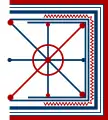Aromanian settlements can be found across the southern Balkan peninsula. They are populated solely by or a large proportion of Aromanians. Below is a list of the settlements that were either founded by Aromanians or are inhabited by a large number or strong Aromanian populations.
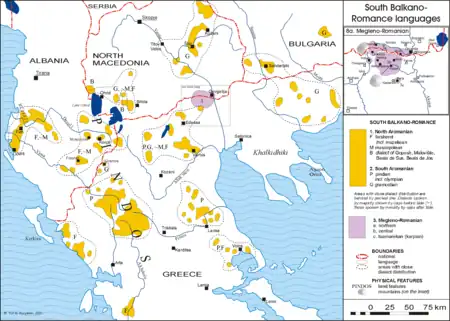
List of settlements
Muzachia region

The Muzachia region (Aromanian: Muzachia, Albanian: Myzeqe) is an area in western Albania which encompasses parts of the Fier, Tirana and Durrës counties. It has a large Aromanian population spread across many villages. The Aromanian inhabitants of Muzachia are referred to as Muzachiars or Muzachirenji in Aromanian.
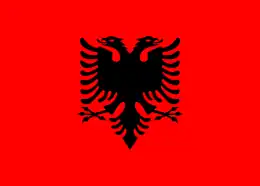 Tirana (in the latest Albanian census, Tirana had the highest number of Aromanians in Albania, although Aromanians form a negligible percentage of the population)
Tirana (in the latest Albanian census, Tirana had the highest number of Aromanians in Albania, although Aromanians form a negligible percentage of the population) Kavajë
Kavajë Divjakë
Divjakë Elbasan
Elbasan Fier (Aromanian: Ferãcã/Ferãche/Ferecã, Ferãca/Fereca)
Fier (Aromanian: Ferãcã/Ferãche/Ferecã, Ferãca/Fereca) Patos
Patos Kosovë
Kosovë Ardenicë
Ardenicë Portëz
Portëz Perlat
Perlat Beshisht
Beshisht Cerkovinë
Cerkovinë Çipllak
Çipllak Grabian
Grabian Grabova e Sipërme (Aromanian: Greãva, Grabuva)
Grabova e Sipërme (Aromanian: Greãva, Grabuva) Gradishtë (Aromanian: Gradishta)
Gradishtë (Aromanian: Gradishta) Jubë (Aromanian: Juba)
Jubë (Aromanian: Juba) Kalasë
Kalasë Koshova (Aromanian: Coshova)
Koshova (Aromanian: Coshova) Kryegjatë
Kryegjatë Libofshë
Libofshë Moravë (Aromanian: Murava)
Moravë (Aromanian: Murava) Përparim
Përparim Pobrat (Aromanian: Pubrat, Pubrata)
Pobrat (Aromanian: Pubrat, Pubrata) Poshnjë
Poshnjë Shtyllas
Shtyllas Skrofotinë (Aromanian: Scrufutina)
Skrofotinë (Aromanian: Scrufutina) Stan-Karbunarë
Stan-Karbunarë Xhyrinë
Xhyrinë Zhepë
Zhepë
Epirus region
The Epirus region encompasses northwestern Greece and southern Albania.
 Berat (Aromanian: Birat, Birati / Bãrat, Bãrata)
Berat (Aromanian: Birat, Birati / Bãrat, Bãrata) Vlorë (Aromanian: Amvlona)
Vlorë (Aromanian: Amvlona)  Selenicë (Aromanian: Selenitsa, Selenitsã/Selenitse)
Selenicë (Aromanian: Selenitsa, Selenitsã/Selenitse)  Kotë
Kotë Gjirokastër
Gjirokastër Andon Poci (Aromanian: Tavan, Tavana)
Andon Poci (Aromanian: Tavan, Tavana) Humelicë (Aromanian: Umelitsa, Umelitse)
Humelicë (Aromanian: Umelitsa, Umelitse)  Palokastër (Aromanian: Palucastra)
Palokastër (Aromanian: Palucastra) Hundëkuq
Hundëkuq Labovë
Labovë Karjan (Aromanian: Carian, Cariana)
Karjan (Aromanian: Carian, Cariana)  Kakoz (Aromanian: Cacoz, Cacoza)
Kakoz (Aromanian: Cacoz, Cacoza) Gjat (Aromanian: Ghiat, Ghiata)
Gjat (Aromanian: Ghiat, Ghiata)  Erind (Aromanian: Rin, Rina)
Erind (Aromanian: Rin, Rina) Nokovë (Aromanian: Nucova, Nãcova)
Nokovë (Aromanian: Nucova, Nãcova) Mingul
Mingul Këllëz (Aromanian: Cãlez, Cãleza)
Këllëz (Aromanian: Cãlez, Cãleza)  Dhoksat (Aromanian: Dhucsat, Dhucsata)
Dhoksat (Aromanian: Dhucsat, Dhucsata) Qestorat (Aromanian: Chiãsturat, Chiãsturata)
Qestorat (Aromanian: Chiãsturat, Chiãsturata) Valare (Aromanian: Valarei, Valarea)
Valare (Aromanian: Valarei, Valarea) Stegopul (Aromanian: Stãgopul)
Stegopul (Aromanian: Stãgopul)  Suhë (Aromanian: Sua)
Suhë (Aromanian: Sua) Saraqinisht
Saraqinisht Selckë
Selckë Leusë
Leusë Sqepur (Aromanian: Schiepur, Schiepura)
Sqepur (Aromanian: Schiepur, Schiepura)  Poliçan (Aromanian: Pulician)
Poliçan (Aromanian: Pulician)  Skore (Aromanian: Scurei, Scurea)
Skore (Aromanian: Scurei, Scurea) Zagoria (Aromanian: Zaguria, Zagurii)
Zagoria (Aromanian: Zaguria, Zagurii)  Topovë (Aromanian: Tupova, Tãpova)
Topovë (Aromanian: Tupova, Tãpova)  Ndëran
Ndëran Xarrë (Aromanian: Dzara)
Xarrë (Aromanian: Dzara) Shkallë
Shkallë Delvinë (Aromanian: Delvãn, Delvãna)
Delvinë (Aromanian: Delvãn, Delvãna) Kardhikaq
Kardhikaq Bajkaj
Bajkaj Stjar
Stjar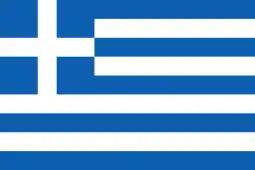 Igoumenitsa (Aromanian: Yuminitse, Yuminitsa)
Igoumenitsa (Aromanian: Yuminitse, Yuminitsa) Paramythia (Aromanian: Pãrmãthia, Pãrmãthii)
Paramythia (Aromanian: Pãrmãthia, Pãrmãthii)  Filiates
Filiates Arta
Arta Agrinio
Agrinio Përmet (Aromanian: Pãrmeti)
Përmet (Aromanian: Pãrmeti)  Frashër
Frashër Leshicë
Leshicë Badëlonjë
Badëlonjë Biovizhdë
Biovizhdë Çarshovë (Aromanian: Ciarshova)
Çarshovë (Aromanian: Ciarshova) Draçovë
Draçovë Hoshevë
Hoshevë Kosinë (Aromanian: Cusina)
Kosinë (Aromanian: Cusina) Kutal
Kutal Vllaho-Psillotarë
Vllaho-Psillotarë Gërmenj
Gërmenj Ioannina (Aromanian: Ianina, Enina or Enãna)
Ioannina (Aromanian: Ianina, Enina or Enãna) Delvinaki
Delvinaki Kefalovryso (Aromanian: Migidei, Migidea)
Kefalovryso (Aromanian: Migidei, Migidea) Vovousa (Aromanian: Baiesa, Baiasa)
Vovousa (Aromanian: Baiesa, Baiasa) Smenos
Smenos Asproklisi
Asproklisi
Pindus
One of the largest population of Aromanians in the Balkans is concentrated in the Pindus Mountains. These people are referred to as Pindians or Pindenji in Aromanian. The Aromanians have traditionally formed a majority population in this area. These populations were the subjects of two failed, Italian-sponsored attempts at creating an autonomous Aromanian statelet in the area, with the Principality of Pindus in World War I and the so-called "Roman Legion" in World War II.
 Agia Paraskevi
Agia Paraskevi Amarantos
Amarantos Ampelochori
Ampelochori Anilio (Aromanian: Nkiare, Chiarã)
Anilio (Aromanian: Nkiare, Chiarã) Anthousa
Anthousa Armata
Armata Avdella (Aromanian: Avdhela)
Avdella (Aromanian: Avdhela) Chrysomilea
Chrysomilea Dessi
Dessi Distrato (Aromanian: Briaza)
Distrato (Aromanian: Briaza) Doliana
Doliana Elatochori
Elatochori Elefthero
Elefthero Flampourari
Flampourari Fourka (Aromanian: Furka)
Fourka (Aromanian: Furka) Fteri
Fteri Gardiki
Gardiki Glykomilea
Glykomilea Grevena (Aromanian: Grebini)
Grevena (Aromanian: Grebini) Greveniti (Aromanian: Grebinishi)
Greveniti (Aromanian: Grebinishi) Haliki
Haliki Iliochori (Aromanian: Dobrinovo)
Iliochori (Aromanian: Dobrinovo) Kalarites
Kalarites Tzoumerkon
Tzoumerkon Kaminia
Kaminia Kastaniani
Kastaniani Kastania
Kastania Katafyto
Katafyto Kipourio
Kipourio Klino
Klino Konitsa (Aromanian: Conita)
Konitsa (Aromanian: Conita) Korydallos
Korydallos Kranea (Aromanian: Turia)
Kranea (Aromanian: Turia) Laista (Aromanian: Laka)
Laista (Aromanian: Laka) Makrino
Makrino Malakasi
Malakasi Matsouki
Matsouki Megali Kerasia
Megali Kerasia Metsovo (Aromanian: Aminciu)
Metsovo (Aromanian: Aminciu) Milea (Aromanian: Ameru)
Milea (Aromanian: Ameru) Mouria
Mouria Nea Zoi (Aromanian: Burshan)
Nea Zoi (Aromanian: Burshan) Orthovouni
Orthovouni Palaioselli
Palaioselli Panagia
Panagia Parakalamos
Parakalamos Pefki
Pefki Perivoli (Aromanian: Pirivoli)
Perivoli (Aromanian: Pirivoli) Pertouli
Pertouli Pirra
Pirra Samarina (Aromanian: Samarina, Xamarina, San Marina)
Samarina (Aromanian: Samarina, Xamarina, San Marina) Skamneli
Skamneli Smixi (Aromanian: Zmixi)
Smixi (Aromanian: Zmixi) Syrrako (Aromanian: Siracu)
Syrrako (Aromanian: Siracu)  Tsepelovo
Tsepelovo Tristeno
Tristeno Trygona
Trygona Vasiliko
Vasiliko Vissani
Vissani Votonossi
Votonossi Votnossi
Votnossi Vovousa (Aromanian: Baieasa)
Vovousa (Aromanian: Baieasa) Vrysochori (Aromanian: Leshnitsa)
Vrysochori (Aromanian: Leshnitsa) Trikomo
Trikomo
Gramos
The Gramos Mountains (Aromanian: Gramostea, Gramustea, Greek: Γράμος, Albanian: Gramoz) in the northern part of the Epirus region of the Balkan peninsula. Many Aromanian settlements are concentrated in this area which is shared by both Greece and Albania. Gramustians or Yrãmushcianji as they are referred to by Aromanians, make up a large proportion of the population there.
 Aetomilitsa (Aromanian: Densko, Denicko)
Aetomilitsa (Aromanian: Densko, Denicko) Argos Orestiko (Aromanian: Hrupistea)
Argos Orestiko (Aromanian: Hrupistea) Dendrohori
Dendrohori Fousia (Aromanian: Fusa)
Fousia (Aromanian: Fusa) Gramos (Aromanian: Gramosta)
Gramos (Aromanian: Gramosta) Ieropigi
Ieropigi Kleisoura (Aromanian: Klisura, Vlahokleisura)
Kleisoura (Aromanian: Klisura, Vlahokleisura) Linotopion (Aromanian: Linatopia, Lintopia, Linotopea, Linutopia)
Linotopion (Aromanian: Linatopia, Lintopia, Linotopea, Linutopia) Milohorion
Milohorion Llëngë (Aromanian: Lunca)
Llëngë (Aromanian: Lunca) Grabovë e Sipërme (Aromanian: Greãva, Grabuva)
Grabovë e Sipërme (Aromanian: Greãva, Grabuva) Niçë (Aromanian: Nicea, Niceani)
Niçë (Aromanian: Nicea, Niceani) Shipskë (Aromanian: Shipca)
Shipskë (Aromanian: Shipca) Nikolicë (Aromanian: Niculitsã, Niculitsa)
Nikolicë (Aromanian: Niculitsã, Niculitsa) Dardhë
Dardhë Arrëz
Arrëz Veterniko
Veterniko Vlasti (Aromanian: Blatsa)
Vlasti (Aromanian: Blatsa)
Macedonia region
A large proportion of Aromanians can be found in the region of Macedonia, which is shared by Albania, Greece, North Macedonia, and Bulgaria (region of Pirin Macedonia).
The city of Moscopole (Albanian: Voskopojë, Voskopoja) was once home to the largest Aromanian population in the world. It was the cultural and commercial center of the Aromanians with a population of over 60,000 people. The city was razed to the ground by Ali Pasha in 1788 causing an exodus of Aromanian people across the Balkans. Many of these ended up in what would become North Macedonia, Albania and Greece. The largest concentration of these were in the Pelister region of North Macedonia, the city of Kruševo and around the Prespa Lakes. The Moscopolitans of the Moscopoleanji as they are known in Aromanian form one of the largest populations of Aromanians today. They speak the Grabovean/Moscopolean dialect of Aromanian and the descendants of the Graboveans/Moscopoleans in Krusevo (Aromanian: Crushuva, Macedonian: Крушево) are today a fully recognised minority group under the constitutional law of North Macedonia.
 Moscopole (Aromanian: Moscopole)
Moscopole (Aromanian: Moscopole) Korçë (Aromanian: Curceaua, Curceau, Curceao or Curciau)
Korçë (Aromanian: Curceaua, Curceau, Curceao or Curciau) Floq
Floq Vithkuq (Aromanian: Bitcuchi)
Vithkuq (Aromanian: Bitcuchi) Drenovë (Aromanian: Ndãrnova)
Drenovë (Aromanian: Ndãrnova) Maliq
Maliq Dishnicë
Dishnicë Plasë (Aromanian: Pleasa, Pliasa, Pljasa)
Plasë (Aromanian: Pleasa, Pliasa, Pljasa) Boboshticë (Aromanian: Bubushtitsã, Bubushtitsa)
Boboshticë (Aromanian: Bubushtitsã, Bubushtitsa) Kamenice (Aromanian: Caminitsã, Caminitsa)
Kamenice (Aromanian: Caminitsã, Caminitsa)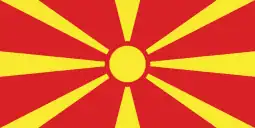 Kruševo (Aromanian: Crushuva)
Kruševo (Aromanian: Crushuva) Bitola (Aromanian: Bituli, Bitule)
Bitola (Aromanian: Bituli, Bitule) Agios Germanos
Agios Germanos Arilevo
Arilevo Dolna Belica (Aromanian: Beala di Ghios, Beala di Cămpu)
Dolna Belica (Aromanian: Beala di Ghios, Beala di Cămpu) Drosopigi (Aromanian: Belkamen)
Drosopigi (Aromanian: Belkamen)
![]() Marmaras
Marmaras
 Flampouro
Flampouro Gopeš (Aromanian: Gopish, Gopeshi)
Gopeš (Aromanian: Gopish, Gopeshi) Gorna Belica (Aromanian: Beala di Suprã, Beala di Supra)
Gorna Belica (Aromanian: Beala di Suprã, Beala di Supra) Jankovec
Jankovec Kallithea
Kallithea Kruševo (Aromanian: Crushuva)
Kruševo (Aromanian: Crushuva) Krystallopigi (Aromanian: Belkamen)
Krystallopigi (Aromanian: Belkamen) Magarevo (Aromanian: Magaruva, Magarova, Mãgãreva)
Magarevo (Aromanian: Magaruva, Magarova, Mãgãreva) Malovište (Aromanian: Mulovishti, Malovishtea, Molovishci)
Malovište (Aromanian: Mulovishti, Malovishtea, Molovishci) Medovon
Medovon Milohorion
Milohorion Moschochori
Moschochori Lechovo
Lechovo Nižepole (Aromanian: Nijopale)
Nižepole (Aromanian: Nijopale) Nymfaio (Aromanian: Nevesca)
Nymfaio (Aromanian: Nevesca) Ohrid (Aromanian: Ohãrda)
Ohrid (Aromanian: Ohãrda)  Patima (Aromanian: Paticina)
Patima (Aromanian: Paticina) Pili
Pili Resen
Resen Trnovo (Aromanian: Tãrnuva, Tãrnova)
Trnovo (Aromanian: Tãrnuva, Tãrnova) Vlasti (Aromanian: Blatsa)
Vlasti (Aromanian: Blatsa) Pipilista (Aromanian: Namata)
Pipilista (Aromanian: Namata) Vrontero
Vrontero Thessaloniki (Aromanian: Sãruna, Sãrunã)
Thessaloniki (Aromanian: Sãruna, Sãrunã) Kozani (Aromanian: Cojani)
Kozani (Aromanian: Cojani) Kavala
Kavala Ano Poroia (Aromanian: Foroi)
Ano Poroia (Aromanian: Foroi)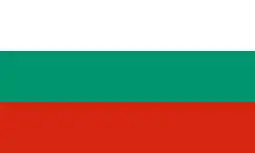 Arzach
Arzach Bratsigovo
Bratsigovo  Bozhdovo
Bozhdovo Štip (Aromanian: Shtip)
Štip (Aromanian: Shtip) Kočani (Aromanian: Coceani, Cociani)
Kočani (Aromanian: Coceani, Cociani) Čatal
Čatal Dorkovo
Dorkovo Emirica
Emirica Gevgelia
Gevgelia Irakleia (Aromanian: Giumala de Jos)
Irakleia (Aromanian: Giumala de Jos) Kalini Kamen
Kalini Kamen Karamandra
Karamandra Vrbica (Aromanian: Vãrbitsa)
Vrbica (Aromanian: Vãrbitsa) Kratovo (Aromanian: Cratova)
Kratovo (Aromanian: Cratova) Kumanovo (Aromanian: Kumanova)
Kumanovo (Aromanian: Kumanova) Lisec
Lisec Lopen
Lopen Lopovo
Lopovo Lozovo
Lozovo Ovcepole
Ovcepole Pazardzhik
Pazardzhik Popovi livadi (Aromanian: Papas Chair)
Popovi livadi (Aromanian: Papas Chair) Peshtera
Peshtera Ponikva, Osogovo (Kočani Municipality)
Ponikva, Osogovo (Kočani Municipality) Radovistea
Radovistea Shatravo
Shatravo Sofia
Sofia Strumski Chiflik
Strumski Chiflik Sveti Nikole (Aromanian: San Nikole)
Sveti Nikole (Aromanian: San Nikole) Tito Veles
Tito Veles Tsepina
Tsepina Vroica
Vroica
Mount Vermion
 Agios Pavlos
Agios Pavlos Ano Grammatiko (Aromanian: Grãmãticuva)
Ano Grammatiko (Aromanian: Grãmãticuva) Ano Vermio (Aromanian: Selia de Sus)
Ano Vermio (Aromanian: Selia de Sus) Kato Vermio (Aromanian: Selia de Jos)
Kato Vermio (Aromanian: Selia de Jos) Kedrona (Aromanian: Cãndruva)
Kedrona (Aromanian: Cãndruva) Naousa (Aromanian: Niagushti)
Naousa (Aromanian: Niagushti) Polla Nera
Polla Nera Seli (Aromanian: Selia)
Seli (Aromanian: Selia) Stenimachos (Aromanian: Isashcovedo)
Stenimachos (Aromanian: Isashcovedo) Veria (Aromanian: Veryia)
Veria (Aromanian: Veryia) Megala Livadia (Aromanian: Livadzi, Calive)
Megala Livadia (Aromanian: Livadzi, Calive) Xirolivado (Aromanian: Xiralivadi)
Xirolivado (Aromanian: Xiralivadi)
Thessaly-Mount Olympus area
This region is home to the most southerly population of Aromanians in the Balkans, with a prominent presence during the late Middle Ages. The Farsherots or the Fãrshãrots as they are known in Aromanian make a substantial percentage of the region's inhabitants.
 Larissa regional unit
Larissa regional unit Farsala
Farsala Trikala (Aromanian: Trikolj)
Trikala (Aromanian: Trikolj) Kalabaka
Kalabaka Volos (Aromanian: Volu)
Volos (Aromanian: Volu) Almyros (Aromanian: Armiro)
Almyros (Aromanian: Armiro) Anthotopos (Aromanian: Kililaiu)
Anthotopos (Aromanian: Kililaiu) Makrychori
Makrychori Mikri Perivoli (Aromanian: Taktalasman)
Mikri Perivoli (Aromanian: Taktalasman) Neriada (Aromanian: Kerminli)
Neriada (Aromanian: Kerminli) Parapotamos
Parapotamos Sesklo (Aromanian: Sheshklu)
Sesklo (Aromanian: Sheshklu) Tyrnavos
Tyrnavos Velestinon (Aromanian: Velescir)
Velestinon (Aromanian: Velescir) Vlachogiano
Vlachogiano Kalochori Larisa (Aromanian: Toivasi, Orta)
Kalochori Larisa (Aromanian: Toivasi, Orta)
Mount Olympus
 Argyropouli (Aromanian: Karajoli, Caragioli)
Argyropouli (Aromanian: Karajoli, Caragioli) Falana
Falana Karitsa
Karitsa Kokkinopilos
Kokkinopilos Leivadi
Leivadi Rodia
Rodia
Romania
 Dobruja
Dobruja Constanța (Aromanian: Custantsa)
Constanța (Aromanian: Custantsa)  Săcele (Aromanian: Sãcele)
Săcele (Aromanian: Sãcele) Ovidiu
Ovidiu Castelu
Castelu Medgidia
Medgidia Cogealac
Cogealac Tariverde
Tariverde Agigea
Agigea Techirghiol
Techirghiol Beidaud
Beidaud Sarighiol de Deal
Sarighiol de Deal Tulcea
Tulcea Lăstuni (Aromanian: Hagilarea)
Lăstuni (Aromanian: Hagilarea) Stejaru (Aromanian: Eschibaba)
Stejaru (Aromanian: Eschibaba) Caugagia
Caugagia Ceamurlia de Jos
Ceamurlia de Jos Ceamurlia de Sus
Ceamurlia de Sus Nicolae Bălcescu
Nicolae Bălcescu Camena
Camena Vasile Alecsandri (Aromanian: Tistimelu)
Vasile Alecsandri (Aromanian: Tistimelu) Baia
Baia Lunca
Lunca Casimcea
Casimcea Panduru
Panduru Sinoe
Sinoe Mihai Viteazu (Aromanian: Mihai Parishcu)
Mihai Viteazu (Aromanian: Mihai Parishcu) Cobadin
Cobadin Slobozia
Slobozia Urziceni
Urziceni Călărasi (Aromanian: Cãlãrashi)
Călărasi (Aromanian: Cãlãrashi) Modelu (Aromanian: Mudel)
Modelu (Aromanian: Mudel) Voluntari
Voluntari Vădeni
Vădeni
Maps
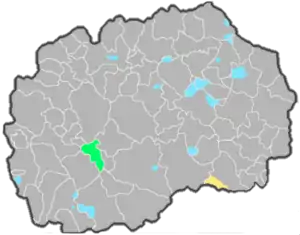 Where Aromanians are an officially recognised minority groupAreas where Aromanians are concentratedAreas where Megleno-Romanians are concentrated
Where Aromanians are an officially recognised minority groupAreas where Aromanians are concentratedAreas where Megleno-Romanians are concentrated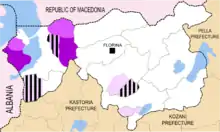 Spread of Aromanians in the Florina regional unit
Spread of Aromanians in the Florina regional unit
